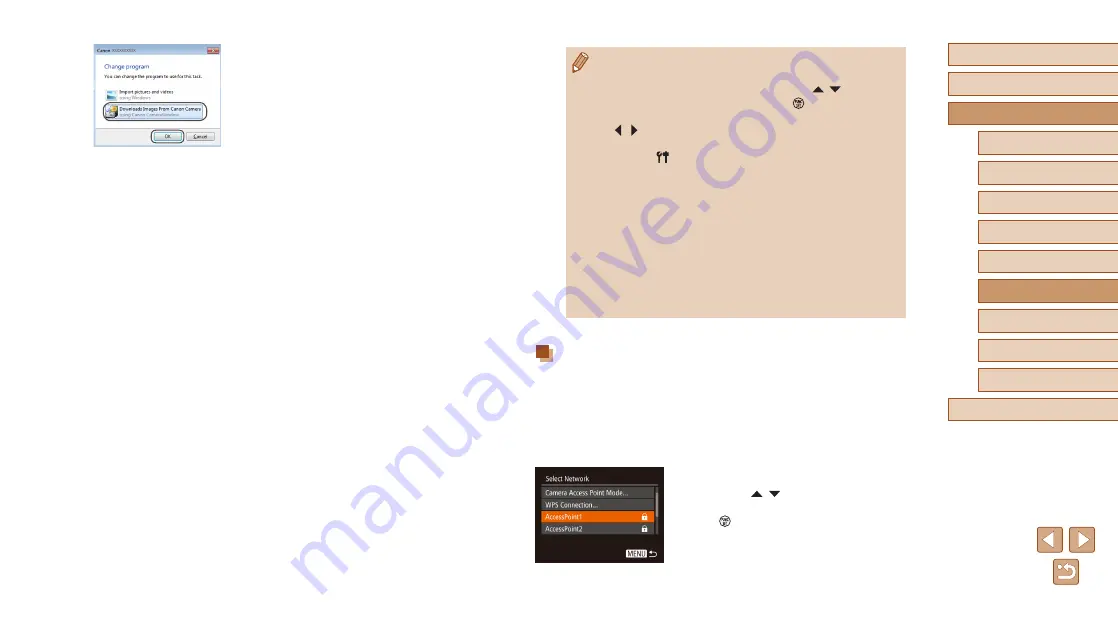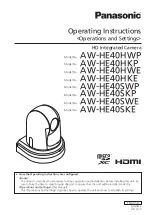
101
Before Use
Basic Guide
Advanced Guide
Wi-Fi Functions
Camera Basics
Auto Mode / Hybrid Auto
Mode
Other Shooting Modes
P Mode
Playback Mode
Setting Menu
Accessories
Appendix
Index
●
Once you have connected to devices via the Wi-Fi menu, recent
destinations will be listed first when you access the Wi-Fi menu.
You can easily connect again by pressing the [ ][ ] buttons to
choose the device and then pressing the [ ] button. To add a
new device, display the device selection screen by pressing the
[ ][
] buttons, and then configure the setting.
●
If you prefer not to display recent target devices, choose MENU
(
27) > [ ] tab > [Wi-Fi Settings] > [Target History] > [Off].
●
You can change the camera nickname displayed on the screen in
step 2 (
●
When the camera is connected to a computer, the camera screen
is blank.
●
Mac OS: If CameraWindow is not displayed, click the
[CameraWindow] icon in the Dock.
●
To disconnect from the camera, turn off the camera.
●
If you chose [PIN Method] in step 6, a PIN code will be displayed
on the screen. Be sure to set this code in the access point.
Choose a device in the [Select a Device] screen. For further
details, refer to the user manual included with your access point.
Connecting to Listed Access Points
1
View the listed access points.
●
View the listed networks (access points)
as described in steps 1 – 4 of “Using
2
Choose an access point.
●
Press the [ ][ ] buttons to choose a
network (access point), and then press
the [ ] button.
10
Display CameraWindow.
●
Windows: Access CameraWindow by
clicking [Downloads Images From Canon
Camera].
●
Mac OS: CameraWindow is automatically
displayed when a Wi-Fi connection is
established between the camera and
computer.
11
Import images.
●
Click [Import Images from Camera], and
then click [Import Untransferred Images].
●
Images are now saved to the Pictures
folder on the computer, in separate
folders named by date.
●
Click [OK] in the screen that is displayed
after image import is complete.
●
When viewing imported images on a
computer, always use software that
supports the images shot on the camera
(software normally installed on the
computer or general-use software).
















































